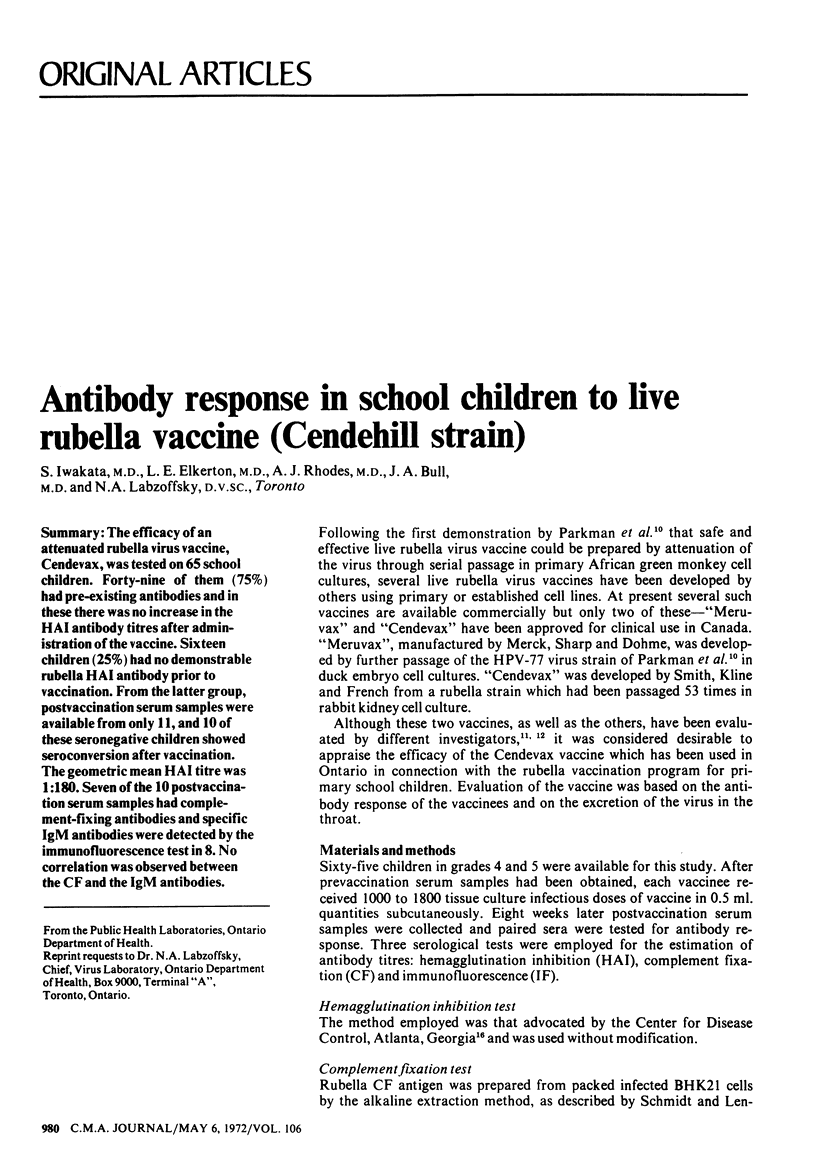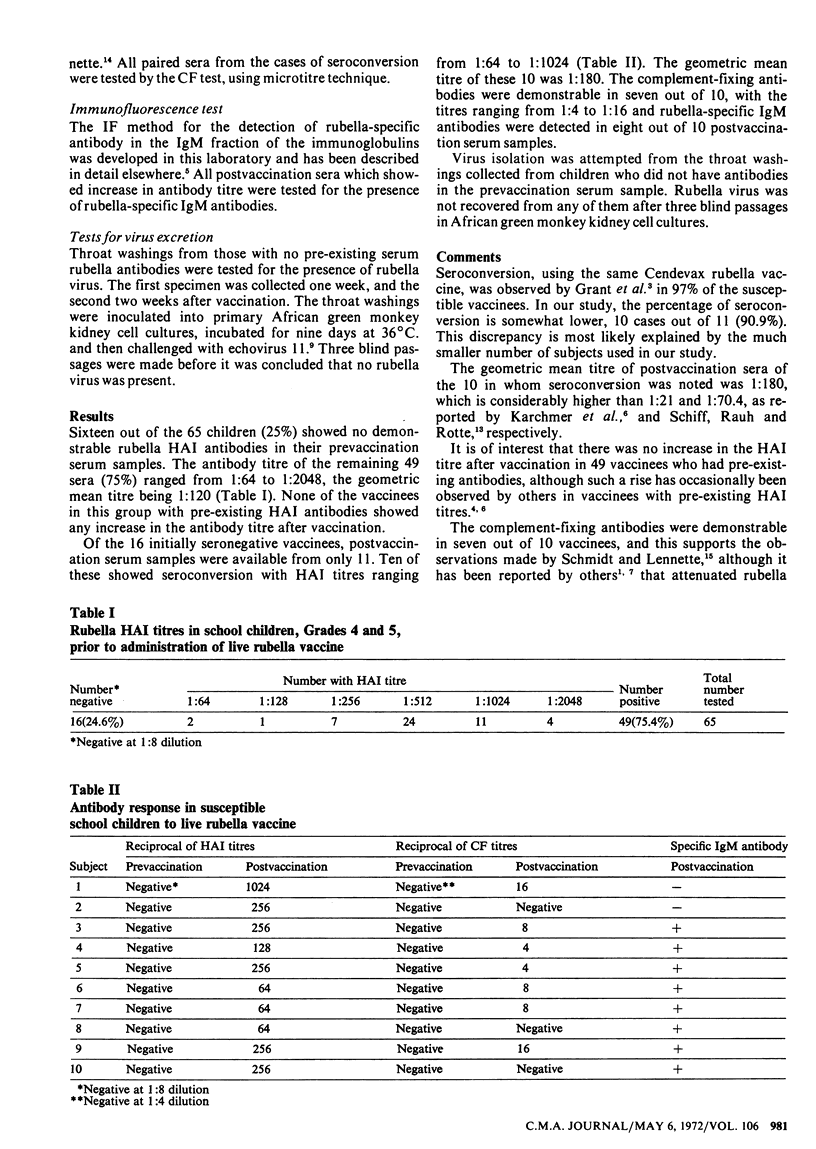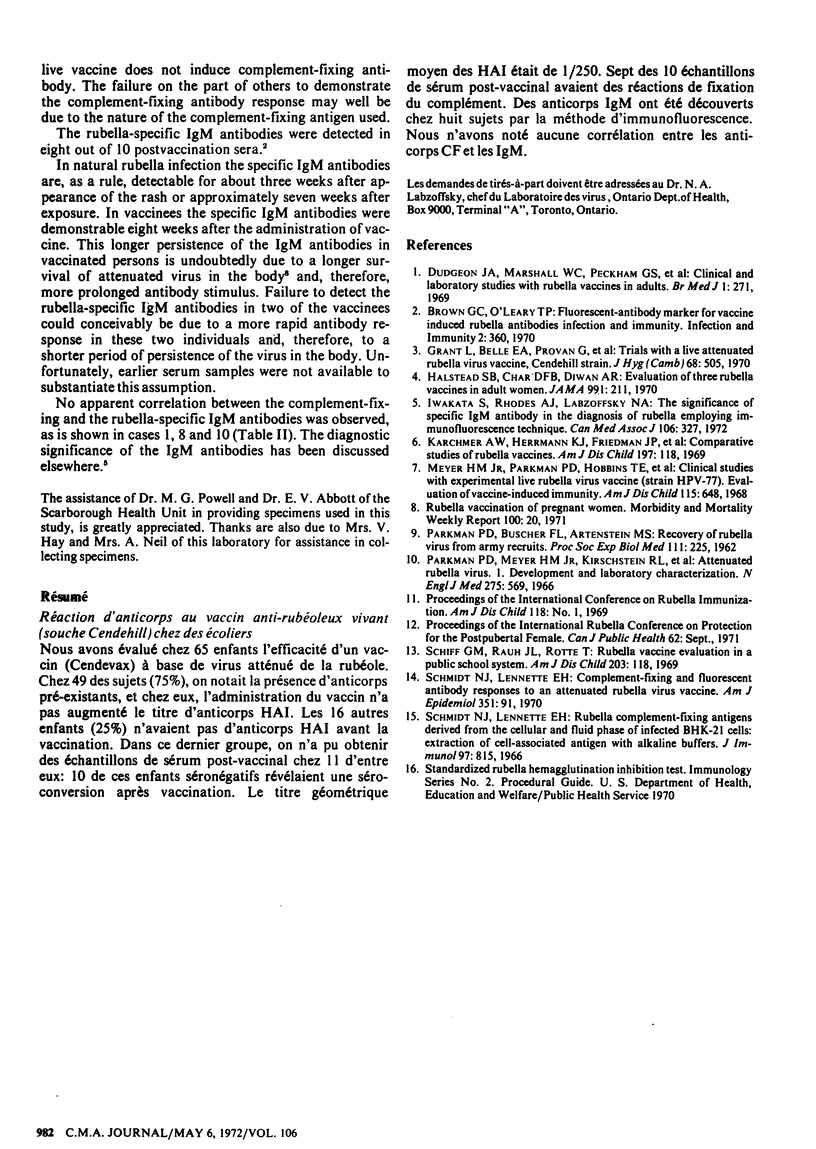Abstract
The efficacy of an attenuated rubella virus vaccine, Cendevax, was tested on 65 school children. Forty-nine of them (75%) had pre-existing antibodies and in these there was no increase in the HAI antibody titres after administration of the vaccine. Sixteen children (25%) had no demonstrable rubella HAI antibody prior to vaccination. From the latter group, postvaccination serum samples were available from only 11, and 10 of these seronegative children showed seroconversion after vaccination. The geometric mean HAI titre was 1:180. Seven of the 10 postvaccination serum samples had complement-fixing antibodies and specific IgM antibodies were detected by the immunofluorescence test in 8. No correlation was observed between the CF and the IgM antibodies.
Full text
PDF


Selected References
These references are in PubMed. This may not be the complete list of references from this article.
- Brown G. C., O'leary T. P. Fluorescent-antibody marker for vaccine-induced rubella antibodies. Infect Immun. 1970 Oct;2(4):360–363. doi: 10.1128/iai.2.4.360-363.1970. [DOI] [PMC free article] [PubMed] [Google Scholar]
- Dudgeon J. A., Marshall W. C., Peckham C. S., Hawkins G. T. Clinical and laboratory studies with rubella vaccines in adults. Br Med J. 1969 Feb 1;1(5639):271–276. doi: 10.1136/bmj.1.5639.271. [DOI] [PMC free article] [PubMed] [Google Scholar]
- Grant L., Belle E. A., Provan G., King S. D., Sigel M. M. Trials with a live attenuated rubella virus vaccine, Cendehill strain. J Hyg (Lond) 1970 Sep;68(3):505–510. doi: 10.1017/s0022172400042418. [DOI] [PMC free article] [PubMed] [Google Scholar]
- Iwakata S., Rhodes A. J., Labzoffsky N. A. The significance of specific IgM antibody in the diagnosis of rubella employing the immunofluorescence technique. Can Med Assoc J. 1972 Feb 19;106(4):327–330. [PMC free article] [PubMed] [Google Scholar]
- Meyer H. M., Jr, Parkman P. D., Hobbins T. E., Ennis F. A. Clinical studies with experimental live rubella virus vaccine (strain HPV-77). Evaluation of vaccine-induced immunity. Am J Dis Child. 1968 Jun;115(6):648–654. doi: 10.1001/archpedi.1968.02100010650002. [DOI] [PubMed] [Google Scholar]
- PARKMAN P. D., BUESCHER E. L., ARTENSTEIN M. S. Recovery of rubella virus from army recruits. Proc Soc Exp Biol Med. 1962 Oct;111:225–230. doi: 10.3181/00379727-111-27750. [DOI] [PubMed] [Google Scholar]
- Parkman P. D., Meyer H. M., Jr, Kirschstein R. L., Hopps H. E. Attenuated rubella virus. I. Development and laboratory characterization. N Engl J Med. 1966 Sep 15;275(11):569–574. doi: 10.1056/NEJM196609152751101. [DOI] [PubMed] [Google Scholar]
- Schmidt N. J., Lennette E. H. Rubella complement-fixing antigens derived from the fluid and cellular phases of infected BHK-21 cells: extraction of cell-associated antigen with alkaline buffers. J Immunol. 1966 Dec;97(6):815–821. [PubMed] [Google Scholar]


